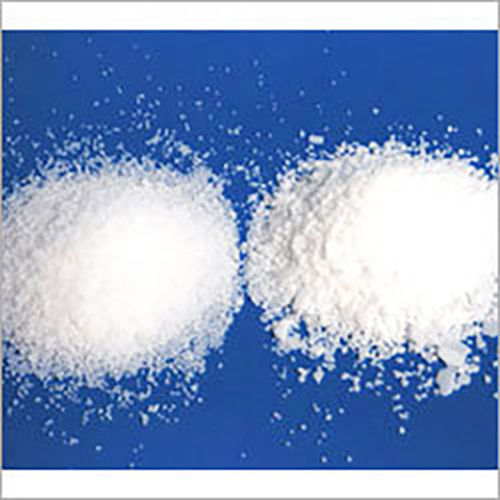

Fractionated Fatty Acids
800 USD ($)/Metric Ton
Product Details:
- HS Code 38231190 / 29157020
- Classification Inorganic Acids
- Grade Industrial Grade
- Application Used in Soaps, Surfactants, Personal Care Products, Deinking, etc.
- Appearance Beads or Flakes form
- Click to View more
X
Fractionated Fatty Acids Price And Quantity
- 800 USD ($)/Metric Ton
- 1 Metric Ton
Fractionated Fatty Acids Product Specifications
- Industrial Grade
- Inorganic Acids
- Used in Soaps, Surfactants, Personal Care Products, Deinking, etc.
- Beads or Flakes form
- 38231190 / 29157020
Fractionated Fatty Acids Trade Information
- Any Malaysia/Indonesia/Thailand ports
- Telegraphic Transfer (T/T) Letter of Credit at Sight (Sight L/C) Letter of Credit (L/C)
- 3000 Metric Ton Per Month
- 1 Months
- Yes
- Contact us for information regarding our sample policy
- packed in 25kg bags without pallets
- Middle East Asia Africa
- All India
- We are working with all ISO, GMP and Kosher Halal certified factories
Product Description
Fractionated fatty acids refer to a group of fatty acids that have been separated or isolated from their natural sources through a process known as fractionation. This separation allows the individual fatty acids to be studied or utilized for various purposes. Each fractionated fatty acid has its own unique characteristics and properties, which can be beneficial in different applications. Here are some features and potential uses of fractionated fatty acids:
1. Chain Length: Fractionated fatty acids can vary in chain length, ranging from short-chain fatty acids (SCFAs) with fewer than six carbon atoms to long-chain fatty acids (LCFAs) with 12 or more carbon atoms. Different chain lengths confer distinct properties and functions. For instance, short-chain fatty acids like acetic acid, propionic acid, and butyric acid are readily absorbed and utilized for energy production, while longer-chain fatty acids, such as palmitic acid and stearic acid, are often used in various industrial applications, including soap and detergent manufacturing.
2. Saturation Level: Fatty acids can be saturated, monounsaturated, or polyunsaturated based on the number of double bonds in their carbon chains. Fractionated fatty acids may consist of specific saturated or unsaturated fatty acids, offering different benefits. For example, saturated fatty acids are more stable and solid at room temperature, making them suitable for certain food product formulations and cosmetic applications. On the other hand, polyunsaturated fatty acids like omega-3 and omega-6 fatty acids are essential for human health and are commonly used as dietary supplements.
3. Source: Fractionated fatty acids can be derived from various natural sources, including animal fats, vegetable oils, and marine sources like fish oil. Different sources yield fatty acids with varying compositions and functionalities. For example, fish oil-derived fractionated fatty acids are often rich in omega-3 fatty acids, which have been linked to various health benefits, including heart health and brain function.
4. Health Benefits: Some fractionated fatty acids, particularly certain medium-chain triglycerides (MCTs), have been studied for their potential health benefits. MCTs are known to be more easily digested and absorbed by the body, making them a popular energy source for individuals with certain medical conditions or those following specific diets.
Applications of Fractionated fatty acids:
It find applications in several industries, including:
1. Food and Beverage: They are used as emulsifiers, flavoring agents, and texture modifiers in processed foods.
2. Pharmaceuticals: Certain fatty acids are used as excipients in drug formulations.
3. Personal Care and Cosmetics: Fatty acids are used in skincare products, soaps, shampoos, and lotions for their emollient and moisturizing properties.
4. Industrial: Fractionated fatty acids are used in the production of detergents, soaps, lubricants, and biodiesel.
FAQ:
Q: What are fractionated fatty acids?
A: Fractionated fatty acids are fatty acids that have been separated or isolated from their natural sources through a process called fractionation. This separation allows individual fatty acids to be studied or used for various purposes.
Q: How are fatty acids fractionated?
A: Fractionation of fatty acids involves processes such as distillation, crystallization, and chromatography. These methods exploit the differences in the physical properties, such as chain length or melting points, of different fatty acids to separate them from mixtures.
Q: What are some examples of fractionated fatty acids?
A: Examples of fractionated fatty acids include butyric acid, caprylic acid, lauric acid, palmitic acid, stearic acid, oleic acid, linoleic acid, and alpha-linolenic acid. Each of these fatty acids has distinct properties and applications.
Q: What are some industrial uses of fractionated fatty acids?
A: Fractionated fatty acids have various industrial applications. They are used in the manufacturing of soaps, detergents, lubricants, and biodiesel. Additionally, they find use as emulsifiers, stabilizers, and texture modifiers in the food and beverage industry.
Q: Are fractionated fatty acids used in the pharmaceutical industry?
A: Yes, certain fractionated fatty acids are used in the pharmaceutical industry as excipients in drug formulations. Excipients are inactive ingredients added to medications to aid in drug delivery or stability.
Q: What are the health benefits of fractionated fatty acids?
A: Some fractionated fatty acids, such as certain medium-chain triglycerides (MCTs), have been studied for their potential health benefits. MCTs are easily digested and can be a quick source of energy. They have been used in medical settings and as dietary supplements for various purposes.
Q: Are there any potential health risks associated with fractionated fatty acids?
A: While some fractionated fatty acids may offer health benefits, others may have negative effects on health if consumed in excessive amounts. For example, consuming large quantities of certain saturated fatty acids may contribute to cardiovascular issues. As with any dietary consideration, it's best to consult with a healthcare professional or nutritionist for personalized advice.
Q: Can fractionated fatty acids be used in skincare products?
A: Yes, fractionated fatty acids are commonly used in skincare products, soaps, shampoos, and lotions for their emollient and moisturizing properties. They can help improve the texture and feel of these products on the skin.
Q: Are fractionated fatty acids used in dietary supplements?
A: Yes, some fractionated fatty acids, particularly omega-3 fatty acids (e.g., EPA and DHA) derived from fish oil, are commonly used as dietary supplements due to their potential health benefits, including supporting heart and brain health.
Q: Are fractionated fatty acids suitable for cooking?
A: The suitability of fractionated fatty acids for cooking depends on the specific fatty acid and its properties. Some fractionated fatty acids, such as certain MCTs, have high smoke points and can be used in cooking at higher temperatures. However, others may not be suitable for cooking and are better used in other applications. Always check the specific properties of the fatty acid before using it in cooking.
Enter Buying Requirement Details
 English
English Spanish
Spanish French
French German
German Italian
Italian Chinese (Simplified)
Chinese (Simplified) Japanese
Japanese Korean
Korean Arabic
Arabic Portuguese
Portuguese





